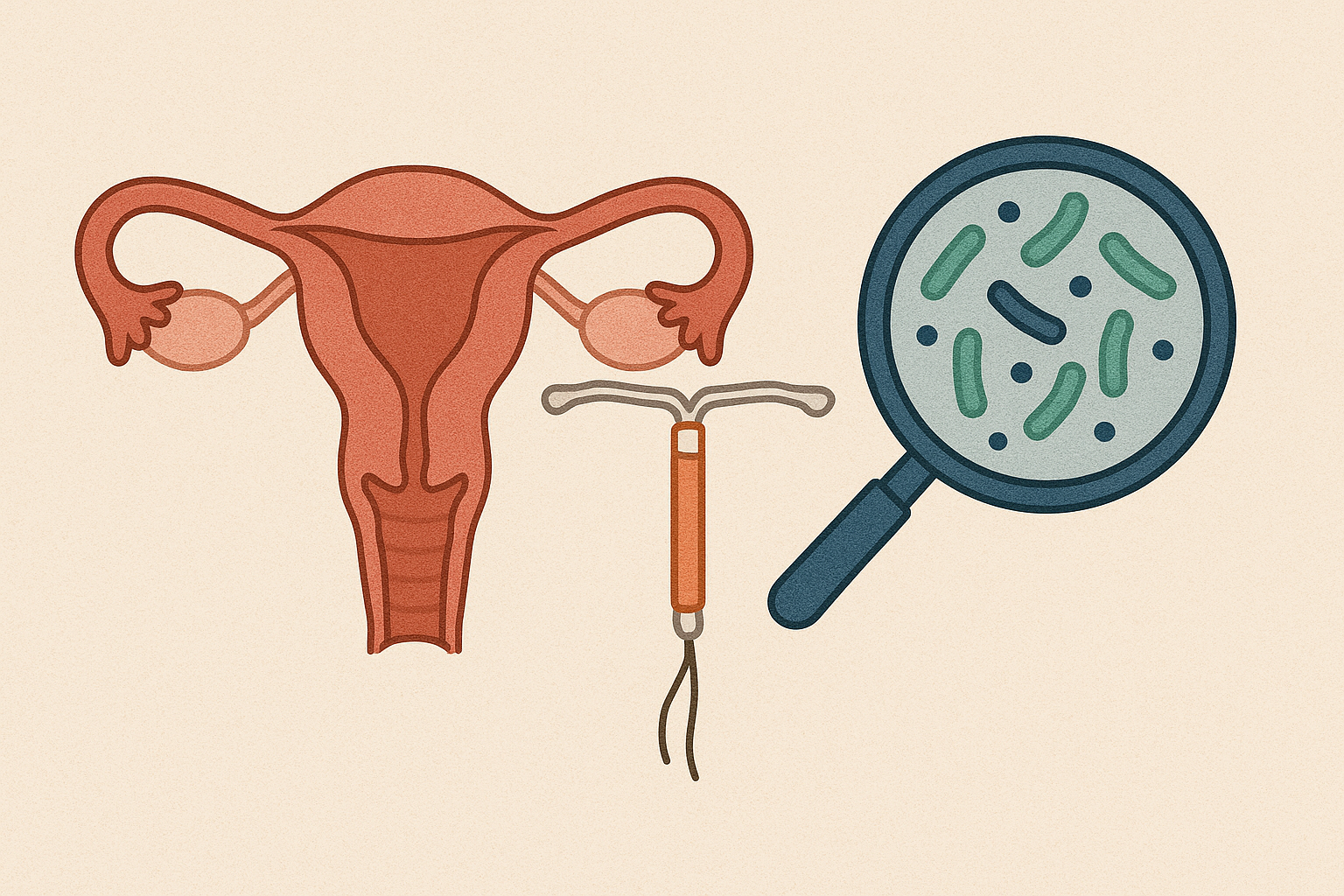THE INTRAUTERINE DEVICE (IUD) USE AND BACTERIAL VAGINOSIS INCIDENCE, INSIGHTS FORM 2023 STUDY IN A SURABAYA, INDONESIA

Downloads
Background: The Intrauterine device (IUD) is one of the most widely used and effective long-term contraceptive methods, with a success rate exceeding 99%. However, prolonged copper IUD use has been associated with an increased risk of bacterial vaginosis (BV), with users reportedly 1.28 times more likely to develop BV than users of other contraceptive methods.This study aims to assess the association between IUD usage and the incidence of BV. Methods: This cross-sectional analytic observational study included 50 participants using IUDs, recruited from three public health centers in Surabaya between May and December 2023. Vaginal swab samples from suspected BV cases were examined independently by two observers. Data were analyzed using the Chi-square test to assess associations and Cronbach's Alpha to evaluate inter-observer reliability, with significance set at p < 0.05. Results: Most BV cases were found among women aged 30–39 years (40%) and among users of non-hormonal IUDs (76%). Based on Nugent scoring, 26 participants (52%) were diagnosed with definitive BV. The association between IUD use and BV incidence was not statistically significant (p = 0.090). Inter-observer reliability was high, with a Cronbach’s Alpha of 0.963. Conclusion: The study concludes that IUD use is not significantly associated with the occurrence of bacterial vaginosis, based on Nugent score evaluation.
Akinajo, O.R., Bello, F.A., Bello, O.O. & Olayemi, O.O. 2017. Screening for bacterial vaginosis before intrauterine device insertion at a family planning clinic in south-west Nigeria. Nigerian Postgraduate Medical Journal, 24(2): 75–80.
Bowman, N. & Thwaites, A. 2023. Menstrual cup and risk of IUD expulsion–a systematic review. Contraception and reproductive medicine, 8(1): 15.
Brown, B.P., Feng, C., Tanko, R.F., Jaumdally, S.Z., Bunjun, R., Dabee, S., Happel, A.-U., Gasper, M., Nyangahu, D.D. & Onono, M. 2023. Copper intrauterine device increases vaginal concentrations of inflammatory anaerobes and depletes lactobacilli compared to hormonal options in a randomized trial. Nature Communications, 14(1): 499.
Falconi"McCahill, A. 2019. Bacterial vaginosis: a clinical update with a focus on complementary and alternative therapies. Journal of Midwifery & Women's Health, 64(5): 578–591.
Howard, S.A. & Benhabbour, S.R. 2023. Non-Hormonal Contraception. Journal of Clinical Medicine, 12(14): 4791.
Liwang, F., Bhargah, A., Kusuma, I.B.H., Prathiwindya, G.G., Putra, I.G.I.S. & Ani, L.S. 2018. Gambaran penggunaan kontrasepsi hormonal dan non hormonal di wilayah kerja UPT Puskesmas Tampak Siring 1. Intisari Sains Medis, 9(3).
Sailan, N.P., Masi, G. & Kundre, R. 2019. Penggunaan Metode Kontrasepsi pada Wanita Usia Subur Dengan Siklus Menstruasi di Puskesmas. Jurnal Keperawatan, 7(2).
Copyright (c) 2025 Eka Fitriani Hafel, Verna Biutifasari, Frans O.H. Prasetyadi

This work is licensed under a Creative Commons Attribution-ShareAlike 4.0 International License.
1. The journal allows the author to hold the copyright of the article without restrictions.
2. The journal allows the author(s) to retain publishing rights without restrictions
3. The formal legal aspect of journal publication accessibility refers to Creative Commons Atribution-Share Alike 4.0 (CC BY-SA).
This Journal (e-ISSN 2656-7806) is licensed under a Creative Commons Attribution-ShareAlike 4.0 International License.
















